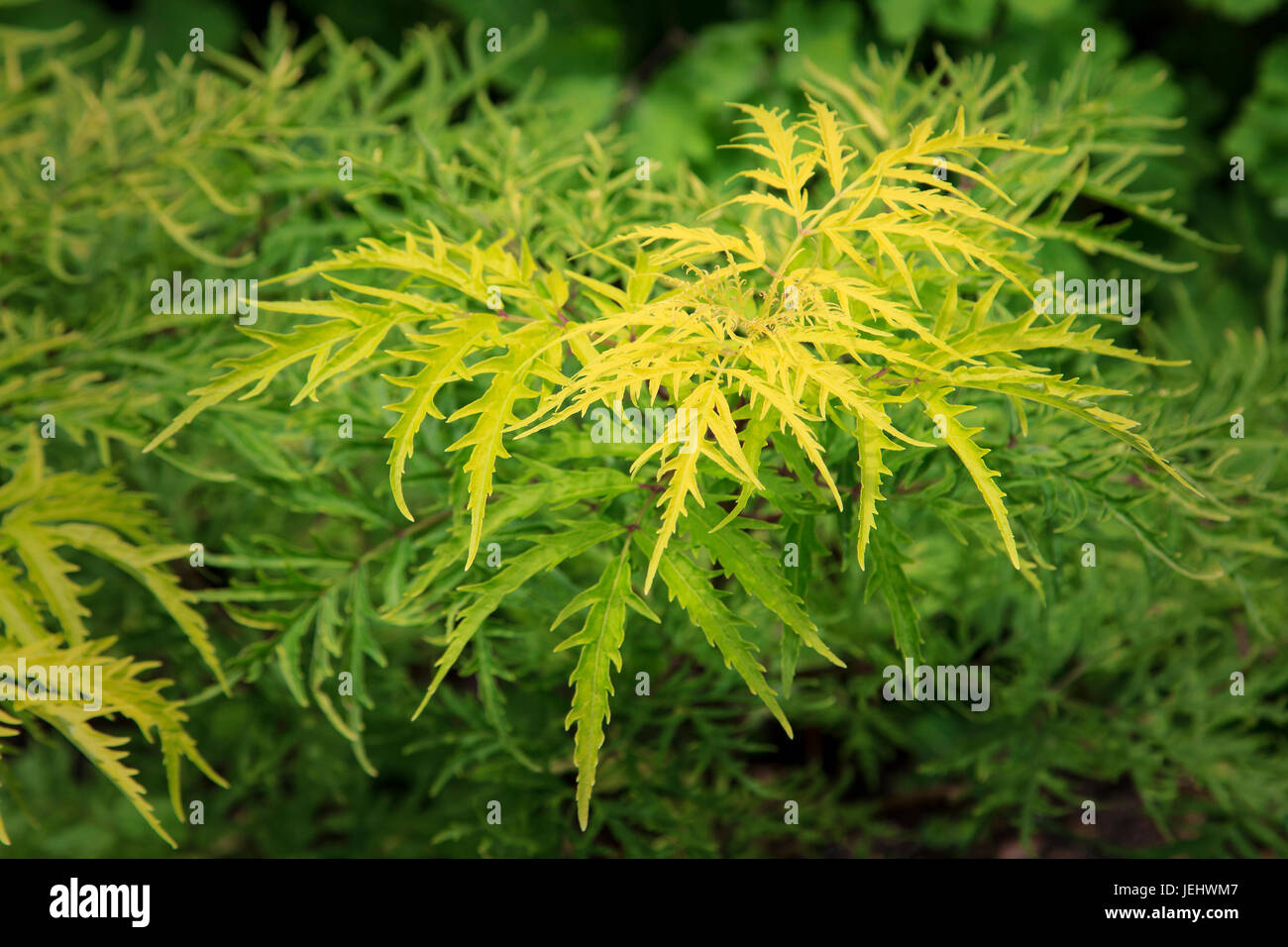Riverdene Garden Center
Lemony Lace Elderberry
Lemony Lace Elderberry
Couldn't load pickup availability
Sambucus racemosa ‘Lemony Lace’
Lemony Lace® Elderberry is a compact, deciduous shrub prized for its finely cut, bright yellow-green foliage with red-tinged new growth. Unlike traditional elderberries, this variety is grown for its ornamental value rather than fruit production. It is cold-hardy (Zone 3-7), deer-resistant, and easy to maintain, making it a striking addition to mixed borders, foundation plantings, and wildlife gardens in Southwest Saskatchewan.
Planting & Location
- Hardiness Zone: 3-7 (extremely winter-hardy, ideal for prairie climates)
- Mature Size: 3-5 feet tall, 3-5 feet wide
- Growth Rate: Fast (up to 24 inches per year)
- Sunlight Needs: Full sun to partial shade (best foliage color in 6+ hours of sun)
-
Soil Preference:
- Prefers moist, well-drained, loamy soil.
- Tolerates clay, sandy, and slightly acidic soils.
- Avoid standing water—elderberries do not tolerate wet feet.
- Spacing: 3-5 feet apart for mass planting, 5+ feet apart for individual shrubs.
Watering
- Young Plants (First Year): Water deeply 1-2 times per week to establish roots.
- Established Shrubs: Water weekly in dry conditions, but plants can tolerate short droughts.
- Avoid Overwatering: Prefers moderate soil moisture but must have good drainage.
Fertilizing
- First Year: No fertilizer needed—focus on root establishment.
-
Mature Shrubs:
- Apply a balanced slow-release fertilizer (e.g., 10-10-10) in early spring to encourage healthy growth.
- Organic alternative: Compost or well-rotted manure in spring.
Pruning & Maintenance
- Best Time to Prune: Late winter to early spring, before new growth starts.
-
How to Prune:
- Remove dead, damaged, or weak branches to promote fresh, healthy growth.
- Cut back by one-third in early spring to maintain shape and encourage bushiness.
- Older shrubs can be rejuvenated by cutting back to 12 inches above the ground every few years.
Flowers & Foliage
- Bloom Time: Spring (May-June)
- Flower Color: White clusters (small, delicate blooms attract pollinators)
-
Foliage:
- Spring: Red-tinged new growth
- Summer: Bright yellow-green, finely cut leaves
- Fall: Orange-red tones for seasonal contrast
Pest & Disease Management
Resistant to: Deer, drought, and urban pollution
Common Pests:
-
Aphids – May cause curled leaves and sticky honeydew.
- Solution: Spray with insecticidal soap or introduce ladybugs.
-
Spider Mites – Can cause leaf discoloration in dry conditions.
- Solution: Hose off with water or use insecticidal soap.
Common Diseases:
-
Powdery Mildew – White fungal coating on leaves.
- Solution: Improve airflow and apply fungicide if needed.
-
Leaf Spot (Fungal or Bacterial) – Causes brown spots on foliage.
- Solution: Avoid overhead watering and remove infected leaves.
Winter Protection
- Highly winter-hardy—no special protection needed.
- Mulching: Apply 2-4 inches of mulch around the base (not touching the stems) to insulate roots.
- Pruning in Late Winter: Cutting back in early spring will promote fresh, colorful growth in the new season.
Landscape Uses
Great for foundation plantings, mixed borders, and specimen plantings
Striking golden foliage provides season-long interest
Compact and low-maintenance—perfect for small gardens
Deer-resistant and adaptable to various soil types
Attracts butterflies and pollinators
Additional Notes:
- Lemony Lace® Elderberry is one of the best ornamental elderberries, offering a unique texture and bright color without aggressive spreading.
- Lifespan: 20+ years with proper care.
- Works well in rock gardens, cottage gardens, mass plantings, or as a focal shrub.
Share


